Search results for: Marketing Communication Mix
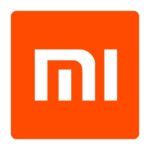
Xiaomi marketing strategy has been traditionally minimalistic due to the cost leadership business strategy pursued by the company. Accordingly, the mobile internet company only engaged in social media marketing, saving on advertising costs and passing this cost advantage to customers in the forms of products with low price tags. However, “Oppo and Vivo have grown in China by using the exact tactics that Xiaomi once avoided. Both companies spend heavily on offline advertisements and celebrity endorsements, plastering billboards on subways and bus stops across China’s second- and third-tier cities.”[1] This has caused a shift in Xiaomi marketing strategy and starting from lately the internet technology company has started to use traditional marketing communications channels as well. Moreover, Xiaomi marketing strategy nowadays also includes product placements and Xiaomi holograms in fiction triller Anon (2018) can be mentioned as an example. As s privately-owned company, Xiaomi does not disclose its annual marketing budget. Xiaomi 7ps of marketing focuses on price element of the marketing mix to a greater extent compared to other elements. Accordingly, the brand’s target customer segment represents price-conscious consumers who want to own the latest smartphones with advanced functions and capabilities for affordable cost. Hunger marketing strategy is one of the integral components of Xiaomi marketing strategy. The electronics and software company appeals to emotional needs of their target customer segment by selling only limited amount of products for a limited duration of time. In other words, the company creates the shortage of supply in purpose, creating a buzz in the market and evoking desire in customers to own a MI brand smartphone. Xiaomi Inc. Report contains a full analysis of Xiaomi marketing strategy. The report illustrates the application of the major analytical strategic frameworks in business studies such as SWOT, PESTEL, Porter’s Five Forces, Value Chain analysis, Ansoff Matrix…
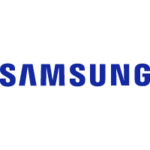
Samsung marketing mix (Samsung 7Ps of marketing) comprises elements of the marketing mix that consists of product, place, price, promotion, process, people and physical evidence. Product Samsung Electronics products are designed in 6 global design centres and manufactured in 53 global production bases. There are 34 R&D centres worldwide that engage in new product development. As illustrated in table below, Samsung products can be divided into three divisions and there are more than one product categories under each division. Product division Product categories Consumer electronics Visual display business Digital appliances business Printing solutions business Health and medical equipments business IT & Mobile Communications Networks business Mobile communications business Device solutions Memory business System LSI business Samsung product divisions and categories Samsung products have won a number of awards and recognitions such as Best Product Award in 8 categories by BLI Summer Pick Award and Gold Award in Design by iF Design in 2015. Place. There are 53 Samsung international sales bases and the multinational electronics company uses the following sales channels: Sales and service dealers. This sales channel is associated with corporate sales. Modern retail outlets owned by the company. These are highly attractive stores with customer service representatives, as well as, employees known as Galaxy Consultants. In 2015, there were Galaxy Consultants at 158 stores under Samsung’s direct management in Korea.[1] The company has plans to expand Galaxy Consultants program beyond Korea. Distributors. Samsung has regional, territory and country distributors. Depending on the territory, size and experience of distributors, Samsung can grant distributorship rights of a single product category or all Samsung products. Online sales. Customers can choose and order Samsung products through official website of the company. Price Samsung pricing strategy can be described as the combination of the following pricing strategies depending on the product range, the…

Samsung’s has the largest marketing budget in the competition and this fact partially explains the leadership position of the business in terms of market share. Samsung spent a total of USD10.2 billion (11.5 trillion won) on marketing in 2016 alone. This included USD3.9 billion (4.4 trillion won) toward advertisements, a 15% increase from 2015[1]. Samsung marketing strategy integrates various forms of advertising, events and experiences, public relations, direct marketing and personal selling as discussed further below in more details. The multinational electronics company has 53 global sales bases worldwide. Samsung marketing strategy is based on the following principles: Samsung 7ps of marketing places greater emphasis on product element of the marketing mix, compared to other elements such as process, people and physical evidence. Specifically, with 34 R&D centres worldwide and 53 global production bases, the multinational electronics company attempts to ensure the continuous pipeline of new products with innovative features and capabilities. Samsung segmentation targeting and positioning strategy integrates multi-segment, imitative and anticipatory positioning techniques. Samsung marketing communications strategy, as it is illustrated in figure below, comprises two steps and each step involves a set of separate activities. It has to be noted that legal review as an important element of marketing communication process is present in both steps – production and execution. This is because neglecting legal implications associated with the development and delivery of marketing communication messages can cause considerable damage to the brand image with severe financial implications. Samsung Electronics marketing communication process[2 Samsung Group Report contains a full analysis of Samsung marketing strategy. The report illustrates the application of the major analytical strategic frameworks in business studies such as SWOT, PESTEL, Porter’s Five Forces, Value Chain analysis and McKinsey 7S Model on Samsung. Moreover, the report contains analyses of Samsung leadership, organizational structure and…
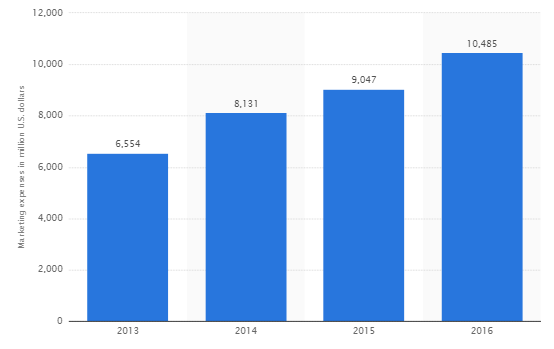
Alphabet (Google) marketing strategy integrates various online and offline marketing techniques. Alphabet’s marketing budgets and efforts mainly focus on main business – Google. It has been noted that “though you’ll never see an ad for the king of the search engines, this query behemoth employs some of the most subtle, yet fantastically impressive marketing strategies out there”[1] Beyond Google, Alphabet Inc. does not invest much resources and efforts to advertise its other projects such as Access, Calico, CapitalG, GV, Nest, Verily, Waymo, and X. This is because most of these projects are only on the stage of research and development and they do not have products and services ready to offer to the market. As it is illustrated in Figure 4 below, total annual marketing spending of the company has been consistently increasing during the past several years. Out of these amounts, for the years ended December 31, 2014, 2015 and 2016, advertising and promotional expenses totalled approximately USD3,004 million, USD3,186 million, and USD3,868 million, respectively[2]. Annual Alphabet Inc. (Google) marketing spending[3] Google marketing strategy is based on the following principles: Within the framework of marketing mix, focusing on product element to a greater extent compared to other elements. The majority of Alphabet products and services are innovative in their nature or they add innovative features to existing products and services. Targeting the broadest customer segment with multiple products and services. The company’s core business, Google offers a wide range of products and services such as Search, Android, Maps, Chrome, YouTube, Google Play, and Gmail that are used by billions of people every day worldwide. Using several elements of marketing communications mix in an integrated manner. Specifically, the internet giant uses sales promotion, events and experiences, public relations and direct marketing tools to company to communicate its marketing message to…
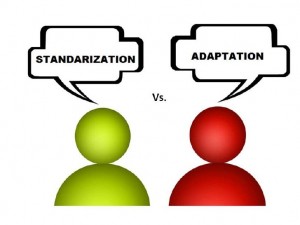
Introduction Modern businesses are granted with vast opportunities in terms of revenue maximisation through entering new markets. Implementation of international market expansion strategy involves strategic-level decision making in relation to global branding strategies, the choice of market entry strategies such as wholly-owned subsidiaries, exporting, licensing, or forming joint-ventures, as well as, deciding on the level of standardisation or adaptation of products and service in new markets. Market entry strategies, branding strategies and the levels of standardisation or adaptation of each single element of marketing mix can be rightly specified as critical success factors directly impacting the success of business in the new market. This essay represents a critical analysis of standardisation vs. adaptation in international marketing in the twenty first century. The essay starts with discussing advantages and disadvantages of standardisation. This is followed by critical analysis of adaptation strategy as an effective customer-orientation strategy by referring to relevant real-life business case studies. The essay is completed by drawing conclusions on standardisation vs. adaptation debate and its relevance to the modern marketplace. Standardisation as a cost saving strategy Standardisation involves using “the same range of products, the same pricing, promotional and location strategies” (Gupta and Randhawa, 2008, p.77). Rationale behind standardisation practices relate to homogenisation of consumer wants and needs due to intensifying forces of globalisation (Winer, 2009). Standardisation can focus on core competitive advantage of the brand and it “allows for a consistent and strong brand to be developed across all markets” (Donelly, 2009, p.150). A Conceptual Model of International Marketing Strategy in relation to standardisation vs. adaptation has been introduced by Theodosiou and Leonidou (2003). According to the model, the degree of standardisation or adaptation is impacted by antecedent factors which have external and internal characteristics. External characteristics of antecedent factors consist of environmental factors, market characteristics, customer issues,…
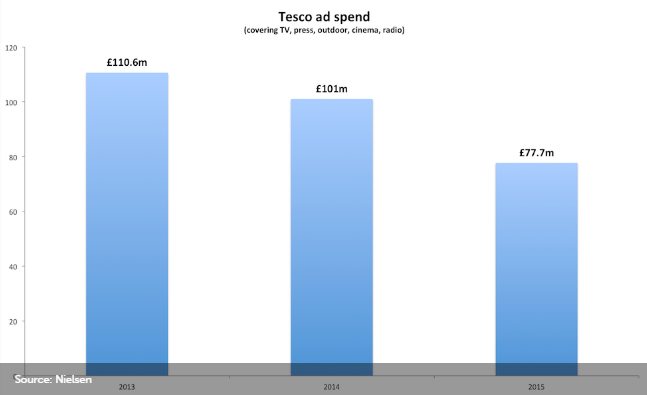
Currently, Tesco marketing strategy aims to regain the trust of stakeholders to the brand. The company is refocusing on “Every Little Helps” strapline to strengthen its core traditional competitive advantage in the marketplace. Certain elements of the marketing communication mix such as print and media advertising, sales promotions, events and experiences and public relations are used by the retail chain to communicate this message to customers. Advertising Tesco marketing strategy makes an extensive use of print and media advertising systematically as a tested channel to send marketing communicate message to current and potential consumers. It is important to note that although Tesco has decreased its advertising budget in 2015 compared to previous years as a part of its massive cost-saving initiatives (see figure below), the efficiency of its print and media advertising has increased. This has been achieved via application of marketing differentiation. For example, during Christmas period, the retail chain eschewed an emotional campaign for humour using the family of characters, played by Ruth Jones and Ben Miller, it had introduced earlier in the year.[1] Changes in Tesco advertising budget Occasionally, Tesco print and media advertising contains valuable advises on cooking or home styling. For example, company recently “released reactive print ads around the Great British Bake Off, with a “bake it or fake it” theme. One page shows what ingredients someone can buy to make the creations shown on TV, the other page shows what they can buy instead.”[2] Sales Promotion Various forms of sales promotions play an integral role within Tesco marketing strategy. The supermarket chain facilitates sales promotions in the following formats: Clubcard. Customers collect 1 point for each GBP 1 spent in Tesco. Several times a year customers receive statements and and vouchers equal to the value of points they have saved. Free gifts. The supermarket chain offers free…
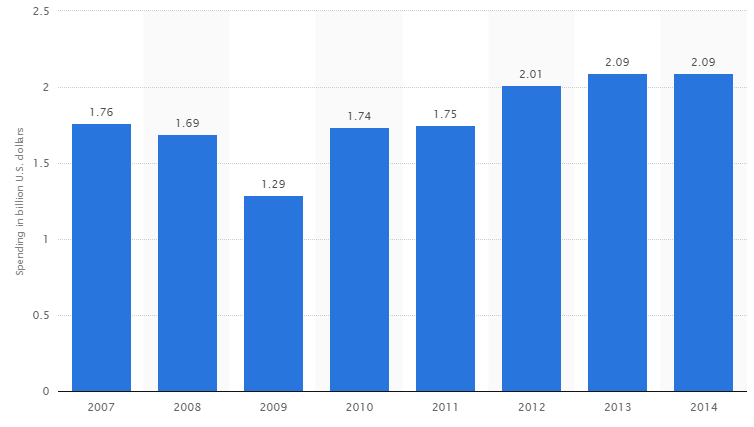
Toyota’s marketing budget has been consistently increasing after the global economic and financial crisis of 2007 – 2009 in line with overall tendency in automobile industry. Toyota marketing strategy succeeds in closely associating the brand with the best practices of Japanese ways of doing things. Specifically, Toyota marketing strategy focusses on the communication of marketing message based on the efficiency of manufacturing and use of superb vehicles. A set of marketing communication channels such as print and media advertising, sales promotion, events and experiences, public relations and direct marketing techniques are used an integrated way in order to this message to the target customer segment. Advertising Print and media advertising is one of the core elements of Toyota marketing strategy. The company uses newspapers, magazines, TV and radio ads, as well as, billboards and posters to reach its target customer segment. As it is illustrated in Figure 7 below, in the US alone the volume of advertising spending of the company reached USD 2.09 billion in 2014 and the largest proportion of this amount, USD 959 million was spent to produce and broadcast TV ads.[1] Toyota’s advertising spending in the US (in USD billions)[2] Toyota employs lifestyle-focused branding activities to promote Lexus brand. The global brand campaign slogan “Amazing in Motion” has proved to be a highly successful marketing move. As a continuation of this campaign, Toyota has partnered with rapper will.i. am to “challenge conventional notions of technology, design and music in a unique experience”[3]. The remix of the rapper’s famous hit #thatPOWER was created to feature Lexus NX highlighted by complex laser technology. Toyota viral marketing also plays an important role in increasing the level of brand awareness and promoting specific products of the company. The list of the most successful Toyota viral marketing campaigns include ‘Jungle…
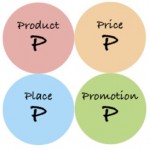
Competition is becoming intensive for virtually all types of products and services and due to this tendency responsibilities of marketing department of companies have increased. Marketing mix can be specified as an effective framework that can be used to increase the overall value of products and services to customers. This article contains analysis of each element of marketing mix by using a variety of secondary data sources. The notion of marketing mix refers to a balance of marketing methods needed to sell products and services. Marketing mix consists of four core elements – product, price, place and promotion that are jointly known as ‘four Ps’. Extended marketing mix contains additional ‘three Ps’ consisting of people, process and physical evidence. Product element of marketing mix Anything that has a potential to satisfy specific customer needs can be specified as product. In modern marketplace learning about customer needs and wants through marketing research precedes development of products and services. Product variables include but not limited to its design, durability, technical features and capabilities, ease of maintenance and others. Businesses use branding in order to differentiate their products and services from other products and services offered in the market. For example, while there is a wide range of soft drinks offered in the market, Coca-Cola drink in particular has a large market share, partially due to successful branding strategy of the company. Importantly, benefits of successful branding go beyond any particular single product to assist the sales of other products offered by the company as well. Positive image of Apple brand assists sales of MacBook desktop computers, as well as, other products offered by the company such as IPhone and IPad. Benefits of products and services have tremendous on the levels of revenues and these benefits can be divided into three categories:…
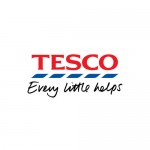
The Chartered Institute of Marketing defines marketing as “the management process responsible for identifying, anticipating, and satisfying customer requirements profitably”. Definition of marketing offered by American Marketing Association, on the other hand, is worded as “the activity, set of institutions, and processes for creating, communicating, delivering, and exchanging offerings that have value for customers, clients, partners, and society at large” (AMA, 2014, online) Alternatively, marketing can be defined as “a business orientation that focuses on satisfying customers’ needs at acceptable levels of revenues and costs” (Loudon et al., 2010, p.2). Elements of marketing process of Tesco contain the following: 1. Analysis of the market and environment. Strategic tool to conduct this analysis include PESTEL, SWOT, Porter’s Five Forces, Value-Chain analysis and others. 2. Identification of the marketing target. Tesco targets specific segment of population in the UK and other countries where the supermarkets of the company operate. 3. Setting marketing objectives. Marketing objectives of Tesco include profit maximisation in short-term and long-term perspectives and increasing the value of the brand image. Marketing objectives of Tesco are closely associated with their business strategy which consist of the following seven elements (Vision and Strategy, 2013, online): a) to be growing the UK core, b) increasing international presence through offline and online channels, c) growing retail services in present markets, d) focus on corporate social responsibility, e) enhancing brand value, f) engaging in more diversification and g) creating value through teamwork. 4. Dealing with elements of the marketing mix. The importance of dealing with each elements of marketing mix taking into account needs, wants and other unique characteristics of target customer segment is fully understood by Tesco management. 5. Reflection, control and revision. This element of marketing process is used by Tesco marketing management in a periodic manner in order to assess the levels of effectiveness of…
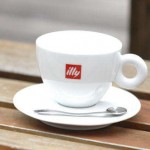
The nature and level of utilisation of marketing strategy by Illy in general and ‘Illy’s and Boos Cupcakery’ in Bristol in particular can be effectively explained by utilising the concept of marketing communications mix. Kotler and Keller (2006) divide elements of marketing communication mix into large six groups that consist of advertising, sales promotion, events and experiences, public relations and publicity, direct marketing and personal selling. Marketing strategy developed by Illy aims to communicate Italian origins of the brand and perceived high quality of products through integration of various marketing communication channels as explained below in a greater details. Advertising Generally, any form of external communication of a business entity can be categorised as advertising. Indoor and outdoor posters, and attractive displays at the point of purchase are the most popular advertising methods used by ‘Illy’s and Boos Cupcakery’ in Bristol. Illy advertising strategy makes an extensive use of print and broadcast advertising in a global scale. Popular social networking site YouTube is one of the main platforms for Illy media advertisements. Sales Promotions The main objectives behind sales promotions can be specified as offering short-term price incentives to customers in order to increase the volume of sales. ‘Illy’s and Boos Cupcakery’ in Bristol engages in sales promotions in a regular manner through temporarily reducing prices for different products. Moreover, Illy engages in occasional sales promotion campaigns through sending promotion offers to customers’ e-mails, including complimentary item with the purchase of specific range of products. Also, unlike many other coffee chains, barristers at Illy are taught to welcome occasions when they are asked for a coffee sample for free. Events and Experiences ‘Illy’s and Boos Cupcakery’ in Bristol does not engage in events and experiences due to the small size of the venue and budget limitations. However,…
